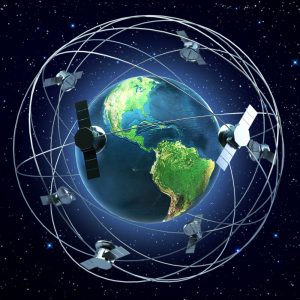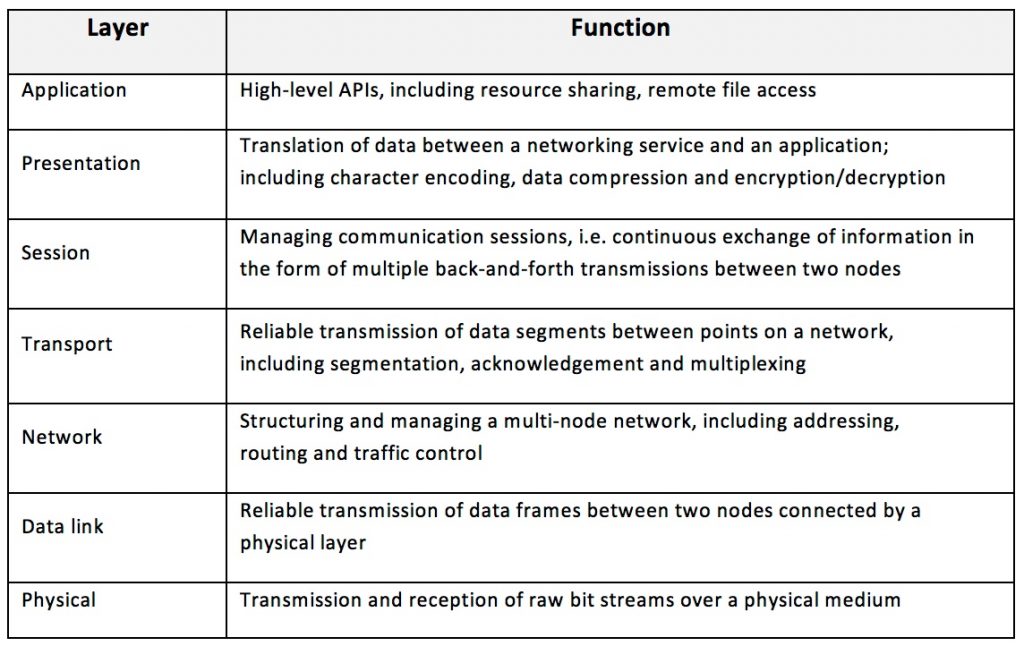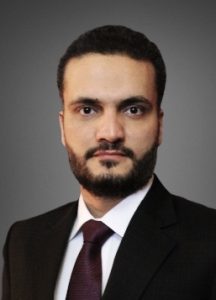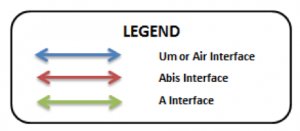
Satellites on different orbits, connected in multigrid networks. Muhammad Furqan, writer and analyst in the satellite communication industry shares his opinion on this fascinating subject.
An Independent Extraterrestrial Network
A couple of years ago I proposed ‘Ring Computing’, a ring of 264,986 km circumference created by a constellation of interconnected geostationary satellites [1]. Ring Computing is the name for a virtual ring around Earth at geosynchronous orbit, like the rings around Saturn. This ring will not be in the visible range of electromagnetic spectrum and will connect the satellites in the constellation. Interconnected geostationary satellites can easily eliminate multiple (Earth to satellite) hops for connecting two or more points on Earth which are not covered by the footprint of a single satellite [2]. The idea proposed; processors onboard spacecraft for software-based radio transmission and networking for links, taking traditional satellite communication from just the ‘Physical’ layer to ‘Data-Link’ and ‘Network’ layers of the OSI model [3].

In 1945, Sir Arthur C. Clarke proposed a constellation of three inter-connected satellites in geostationary orbit to cover the whole globe [4]. For the Arthur C. Clarke model the ring is merely a triangle which can be made to approach a circular shape by increasing the number of the satellites in the constellation.

With recent developments in the satellite communications industry, around 10,000 satellites of multiple constellations are set to be deployed by 2020. These announced constellations have created ripples within satellite communications, technology firms, regulators and environmentalist communities. Many are skeptical about the future of these constellations [5]. Involvement of some of the biggest technology giants and their investments in the magnitude of billions of dollars has made the future of some of the announced constellations secure. The question, however, is the interoperability of these networks with each other and with existing (both terrestrial and extraterrestrial) networks.
In traditional cellular networks, users have the freedom to choose their own devices, services and network operators, without any knowledge of the vendors, architecture or systems deployed by their respective operators. The announced LEO-HTS networks will be connecting end-users directly with the satellites for the first time (with the exception of MSS users), at a larger volume. The biggest customers for these constellations will be MNOs and ISPs, which are looking to expand their networks to provide global coverage to their subscribers, with mobility. This expansion will be chaotic for the traditional GEO satellite communication network operators, unless they evolve to adopt accordingly.
The LEO-GEO Hybrid Multigrid Network could be a ‘win-win’ situation for the existing and upcoming networks. This network will require Ring Computing communication with LEO-HTS satellites, which will be connected to their neighbouring satellites as well, forming a grid network. When deployed, this network will successfully complement the proposed 6th Generation of mobile communication, providing global coverage through satellite communication.

This network architecture can be achieved by making the geostationary satellites in the ring BSC/Controller of the network. These satellites, due to larger footprints and their stationary position, can cover a lot of LEO-HTS satellites in comparison with multiple earth-stations, making the geostationary satellites more suitable for TT&C of the LEO-HTS constellations. Satellites in both the orbits will require onboard processing for software-based networking and radio transmission along with additional antennas to communicate between the orbits and neighbouring satellites.




A lot of multidimensional research & development is required to convert this concept into a reality. This will also eliminate a potential confrontation between the operators of satellites at different altitudes by allocating different bands of radiofrequency spectrum for different interfaces. Satellite operators in geostationary orbit will have to accept the realities of exponential growth in demand for data in terrestrial networks due to technologies like Big Data, IoT, and Cloud Computing etc. and must adapt to the development accordingly to survive.
The proposed system will be a totally independent network, capable of providing for the needs of customers/subscribers with high throughput links with ease of global mobility and coverage within any given geographical socio-economical markets. However, it may hold considerable significance to the markets located in the Middle East and its adjacent neighbourhoods.
Rich, oil-based economies with neighbouring politically unstable countries create multiple opportunities for the proposed system in the region. The populations of the economically and politically stable countries of GCC mainly comprise skilled expatriate migrants from different cultures and backgrounds, creating ample opportunity for VoIP, VoD and video streaming applications from all parts of the world. Developments in broadcasting and video streaming technologies including UHD 4K, 8K and proposed 3D channels for customer viewership, as well as migration of DTH services to IP-based networks create a lot demand for bandwidth expansion. The proposed system can easily accommodate the increased data transmission. This region also adapts timely to mobile communication advancements in the world of technology. The upcoming 2022 FIFA World Cup in Qatar and Dubai Expo 2020 will add exponential rise in the demand of advanced connectivity with better coverage.
Some neighbouring countries of the GCC nations are currently experiencing political turmoil and are currently in a situation of man-made-disaster. Disaster management, relief operations, military communication, broadcasting services and last mile connectivity to the people surrounded by these disasters are main connectivity requirements of these countries. With communication infrastructure almost destroyed, the proposed system can easily provide for priority requirements without the need for installation of any infrastructure, not even a VSAT terminal, with ease of mobility and complete coverage.
Abbreviations:
OSI: Open Systems Interconnection
LEO: Lower Earth Orbit
GEO: Geosynchronous Earth Orbit
HTS: High Throughput Satellite
ISP: Internet Service Provider
MNO: Mobile Network Operator
BTS: Base Transceiver Station
AP: Access Point
BSC: Base Station Controller
MSC: Mobile Switching Center
IoT: Internet of Things
MSS: Mobile Satellite Services
VSAT: Very Small Aperture Terminal
PSTN: Public Switched Telephone Network
VoIP: Voice over IP
VoD: Video on Demand
References:
[1] Muhammad Furqan: Future of Satellite Communication, Satcom Post, Sep 9, 2014.[2] Muhammad Furqan: Ring Computing: Challenges & Advantages, Satcom Post, Sep 19, 2014.
[3] Hassan Khan: Utilizing Software Defined Technologies to Develop Ring Computing in Geostationary Satellite Communications, Queensland University of Technology, May 2015.
[4] Arthur C. Clarke: Extra-Terrestrial Relays, Wireless World, Oct 1945.
[5] Muhammad Furqan: Survey Analysis: ‘Near Future of Satellite Communications’, Satcom Post, Dec 1, 2014.

About Muhammad Furqan:
With around a decade of experience in the satellite communications industry, Muhammad Furqan is a renowned writer and analyst with multiple publications and keynote appearances at different international platforms. He has been advocating for innovation in satellite communications in accordance with development in terrestrial technology. For the same purpose he recently established a technology wisdom platform; Datellite, for multidimensional integration of communications satellites with data related technologies. Currently based in Australia, he has worked in different regions including Middle East and Asia Pacific. Email: [email protected]; Twitter: @furqan_satcom
Original published at: http://spacewatchme.com/2017/02/geo-leo-hybrid-multigrid-network/
 SpaceWatch.Global An independent perspective on space
SpaceWatch.Global An independent perspective on space


